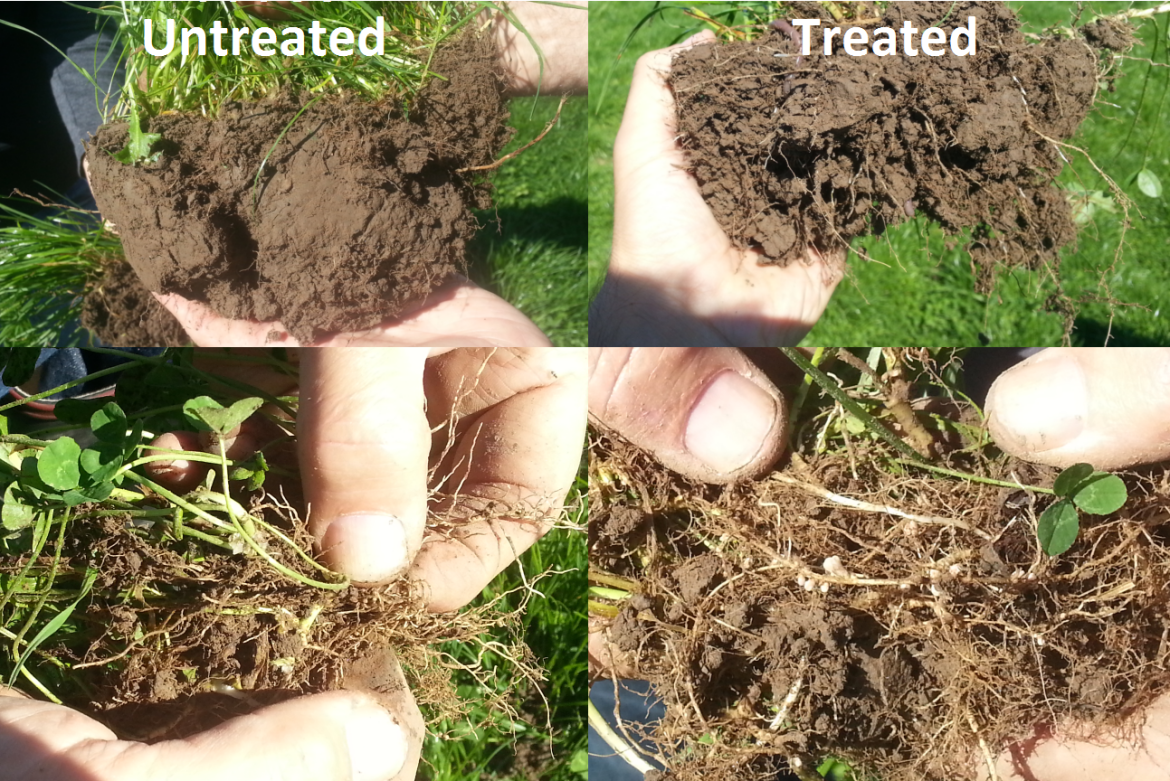The importance of clover in in pasture is well known. It is the major source of nitrogen and improves pasture quality while also balancing the seasonal growth of grass species. Clover produces a high quality feed but its most important role is its ability to efficiently supply the large quantities of nitrogen (N) essential to sustain highly productive pastures. Clover species live together with root inhabiting bacteria that remove nitrogen from the air and make it available to the plants. Published data suggests that annually clover can produce up to 700kg of N per hectare. Non-nitrogen-fixing neighbouring plants benefit as well because nitrogen in clover is released into the soil due to leakage from the roots and breakdown of dead roots. Unfortunately clover can often be less than optimal, reducing the benefits and restricting a pastoral systems potential growth yields. This happens due to:
- Sub-optimal growth conditions
- Over-grazing
- Excessive synthetic N use promoting grasses to out-compete clover
- Cool soils or drought
- Unbalanced and nutrient deficient soils
How EM enhances Clover Growth
Using a microbial inoculant like EM helps to stimulate clover growth. It does this through the following mechanisms in the soil:
- The microbes in EM help to mobilise nutrients and provide essential nutrients essential for clover growth through the recycling of organic matter in the soil. This helps to create a fertile rhizosphere
- Production of PGR substances – EM has been shown to produce plant growth producing substances like auxins, cytokinins, enzymes, vitamins and gibberellin’s. These compounds increase the rate of seed germination and stimulate the development of root tissues; leading to an increase in the surface area of the roots. This increases the ability for the plant to access water and nutrients. The published data to the right (table 4) shows the microbes in EM and the plant growth regulators it produces.
- The microbes in EM also prevent and can change a negative soil environment. This occurs through outcompeting negative and disease inducing microbial species and also by antagonistic activities against soil borne plant root pathogens.
- EM not only adds microbes to the soil but stimulates resident microbial activity. This goes a long way to enhancing plant growth, and this added biological activity in the rhizosphere promotes nodulation in the clover roots, and increases symbiotic N fixation by clover plants.
- One of the more well-known microbes in EM is photosynthetic bacteria. Photosynthetic bacteria in the soil enhances other microorganisms, for example, VA (vesicular-arbuscular) mycorrhiza in the rhizosphere is increased due to the availability of nitrogenous compounds (amino acids) for use as substrates secreted by Photosynthetic bacteria. VA mycorrhiza increases the solubility of phosphates in soils thereby supplying unavailable phosphorus to plants. VA mycorrhiza can coexist with Azotobactor as nitrogen fixing bacteria and enhance nitrogen fixing ability of legumes. Mycorrhizae fungi also increase the surface area associated with the plant root, which allows the plant to reach nutrients and water that otherwise might not be available. Mycorrhizae essentially extend plant reach to water and nutrients, allowing plants to utilize more of the resources available in the soil.
Examples
In the below video, Canterbury Farmer, Tim Hawke discusses how EM has impacted his farm and talks about the abundance of clover which has come back to his pastures.
The below image illustrates a paddock trial which shows EMs ability to improve soil structure. The image shows the improved soil structure in the EM treated paddock with more fibrous roots and clover N fixing nodules.

Source link














